00:53
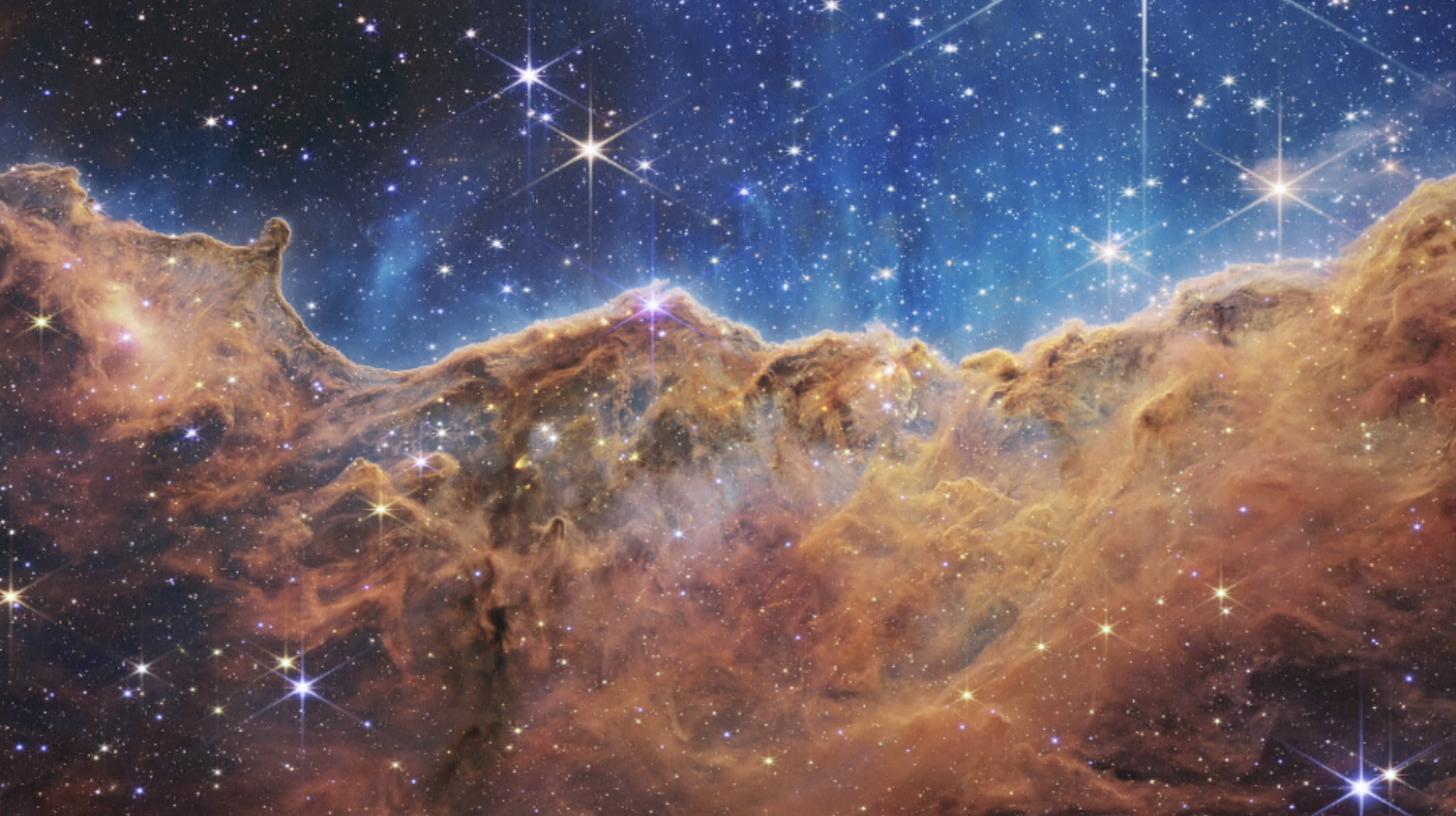
The magnificence of the universe has been showcased with clarity never seen before in a batch of images from the James Webb Space Telescope, also known as JWST or the Webb, released by NASA on Tuesday.
Designed to peer further than before and with greater clarity at the dawn of the universe, the Webb telescope has captured thousands of galaxies in sharp detail, revealing stars previously hidden from view.
The set introduced five targets scientists had known about: the galaxy cluster SMACS 0723, the Carina Nebula, the Southern Ring Nebula, Stephan's Quintet and the spectrum of exoplanet WASP-96b.
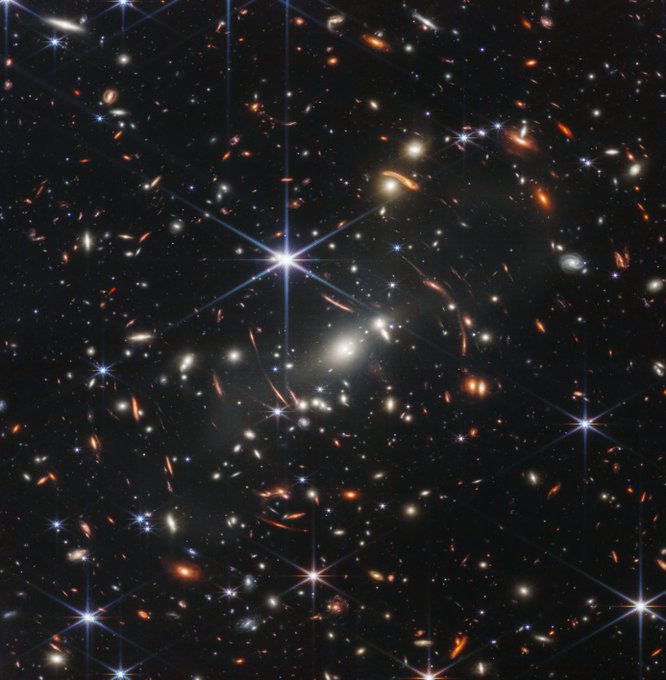
Known as Webb's First Deep Field, this image of galaxy cluster SMACS 0723 was released by NASA on July 11, 2022.
Known as Webb's First Deep Field, this image of galaxy cluster SMACS 0723 was released by NASA on July 11, 2022.
Taken by Webb's Near-Infrared Camera (NIRCam), the first picture – dubbed Webb's First Deep Field – was debuted on Monday by U.S. President Joe Biden.
The deep field is a composite of images at different wavelengths that together showcase the galaxy cluster SMACS 0723 as it appeared 4.6 billion years ago, according to NASA.
It said that there are many more galaxies in front of and behind the cluster SMACS 0723 as its gravitational field can bend the light rays from more distant galaxies.
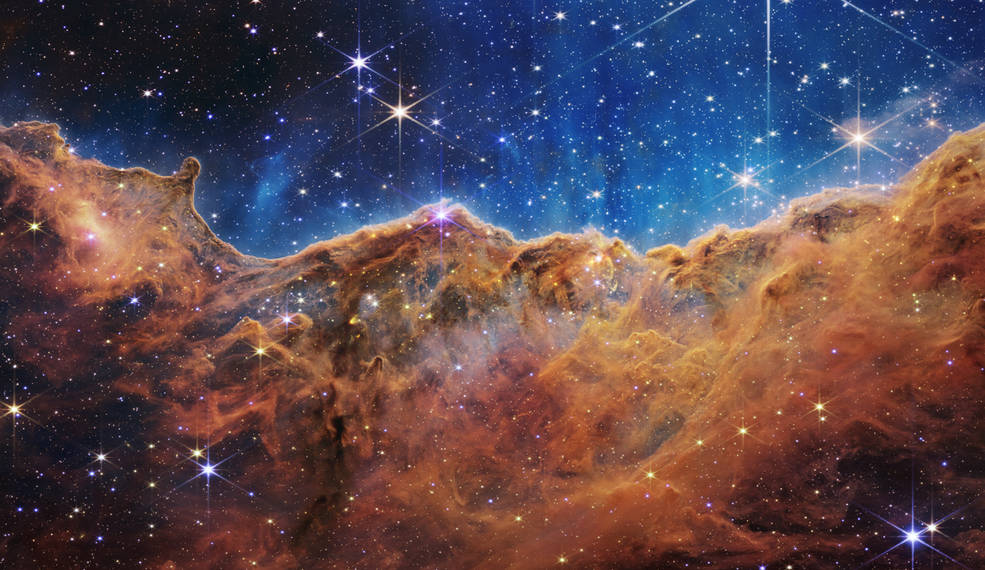
An image from the James Webb Space Telescope shows the edge of a nearby, young, star-forming region called NGC 3324 in the Carina Nebula, released by NASA on July 12, 2022.
An image from the James Webb Space Telescope shows the edge of a nearby, young, star-forming region called NGC 3324 in the Carina Nebula, released by NASA on July 12, 2022.
The Carina Nebula and the Southern Ring Nebula – each thousands of light years away from Earth – are two enormous clouds of gas and dust blasted into space by stellar explosions to form incubators for new stars.
At roughly 7,600 light-years from Earth, Webb's look at the 'Cosmic Cliffs' in the Carina Nebula unveils the earliest, rapid phases of star formation that were previously hidden, NASA said.
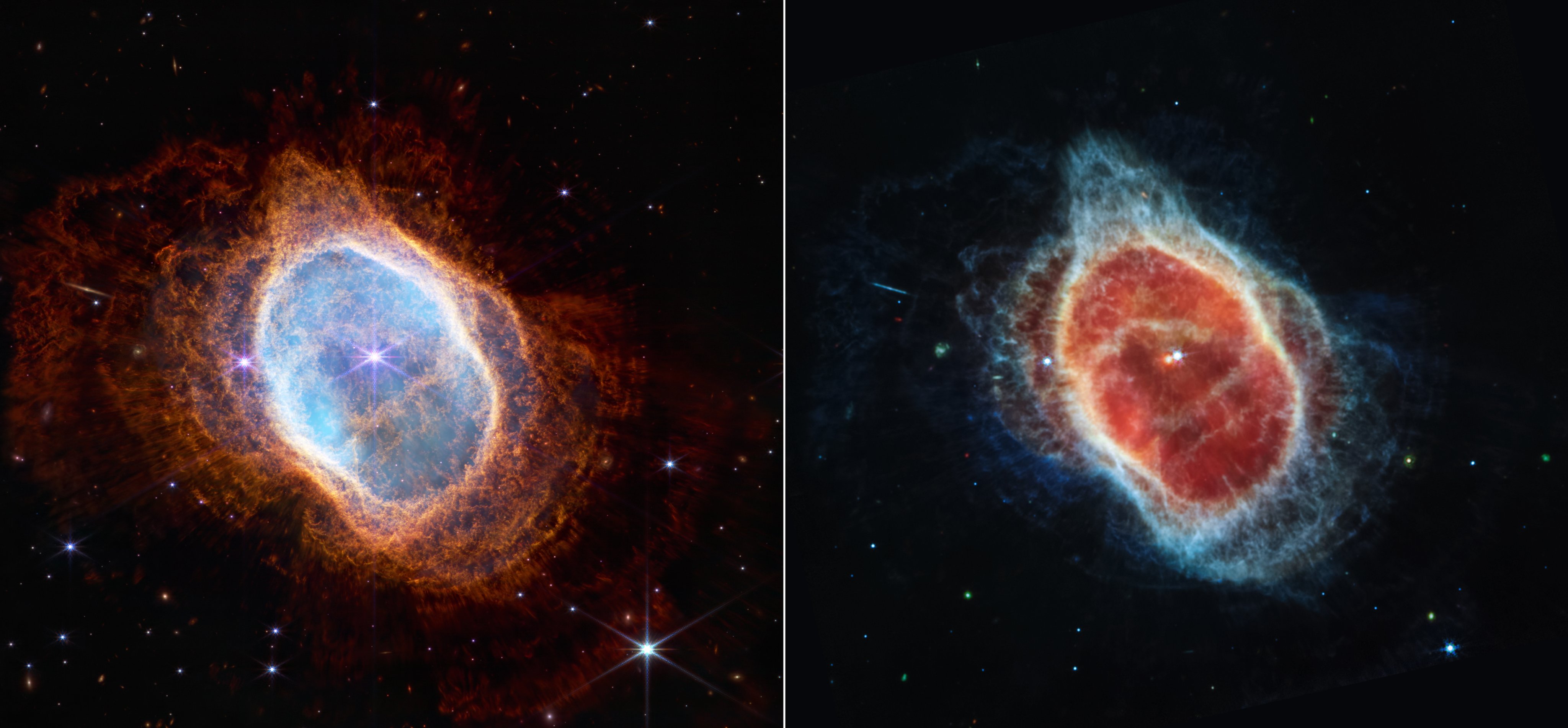
Two cameras aboard Webb captured the latest image of this planetary nebula cataloged as NGC 3132, also informally known as the Southern Ring Nebula.
Two cameras aboard Webb captured the latest image of this planetary nebula cataloged as NGC 3132, also informally known as the Southern Ring Nebula.
Two cameras aboard Webb captured the latest image of a planetary nebula cataloged as NGC 3132, also informally known as the Southern Ring Nebula. At approximately 2,500 light years away, the expanding cloud of gas wraps two stars that are locked in a tight orbit.
Images from Webb's NIRCam on the left feature the stars and their layers of lights, and its Mid-Infrared Instrument (MIRI) shows for the first time that the second star is surrounded by dust.
The dimmer star at the center of this scene has been sending out rings of gas and dust for thousands of years in all directions, while the brighter star is in an earlier stage of its stellar evolution and will probably eject its own planetary nebula in the future, according to NASA.
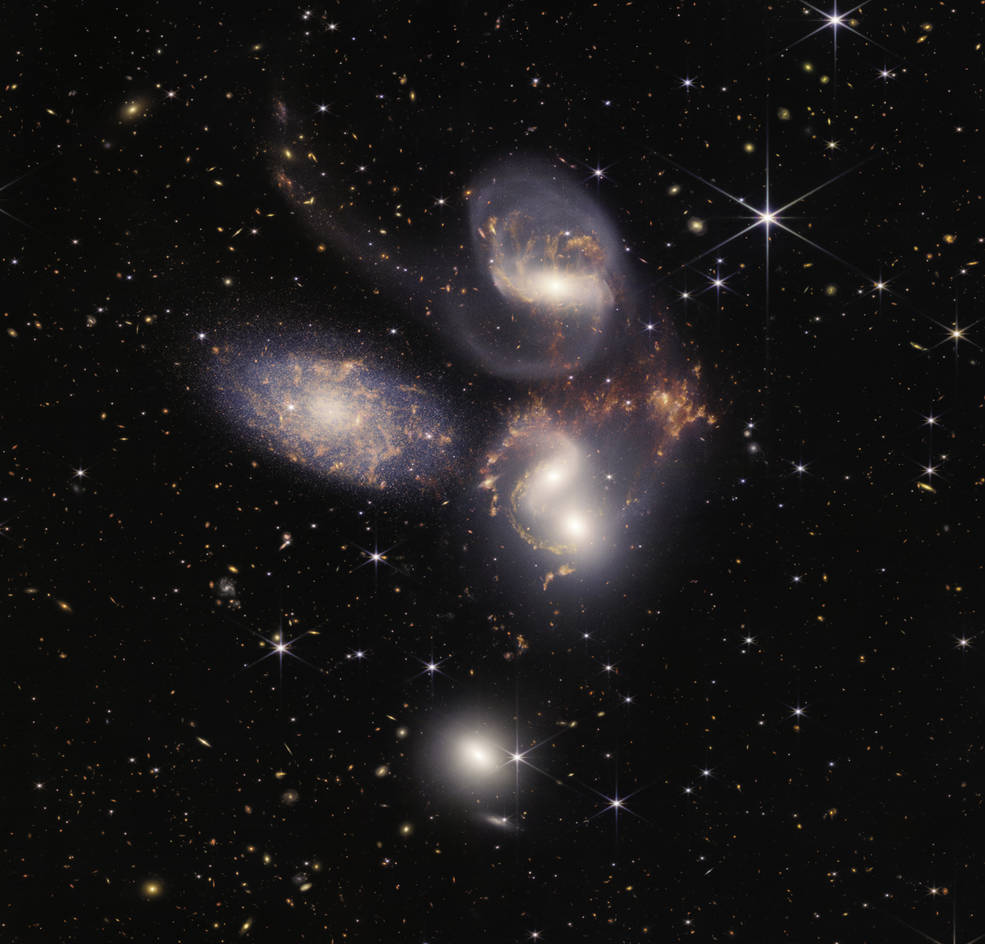
Webb's view of a group of five galaxies located in the constellation Pegasus.
Webb's view of a group of five galaxies located in the constellation Pegasus.
Stephan's Quintet, first identified in 1877, encompasses five galaxies described by NASA as "locked in a cosmic dance of repeated close encounters."
The agency said that the enormous mosaic is Webb's largest image to date, covering about one-fifth of the Moon's diameter.
It is said to contain over 150 million pixels and is constructed from almost 1,000 separate image files. The information provides new insights into how galactic interactions may have driven galaxy evolution in the early universe.
NASA also presented Webb's first spectrographic analysis of an exoplanet – one roughly half the mass of Jupiter that lies more than 1,100 light years away – revealing the molecular signatures of filtered light passing through its atmosphere.
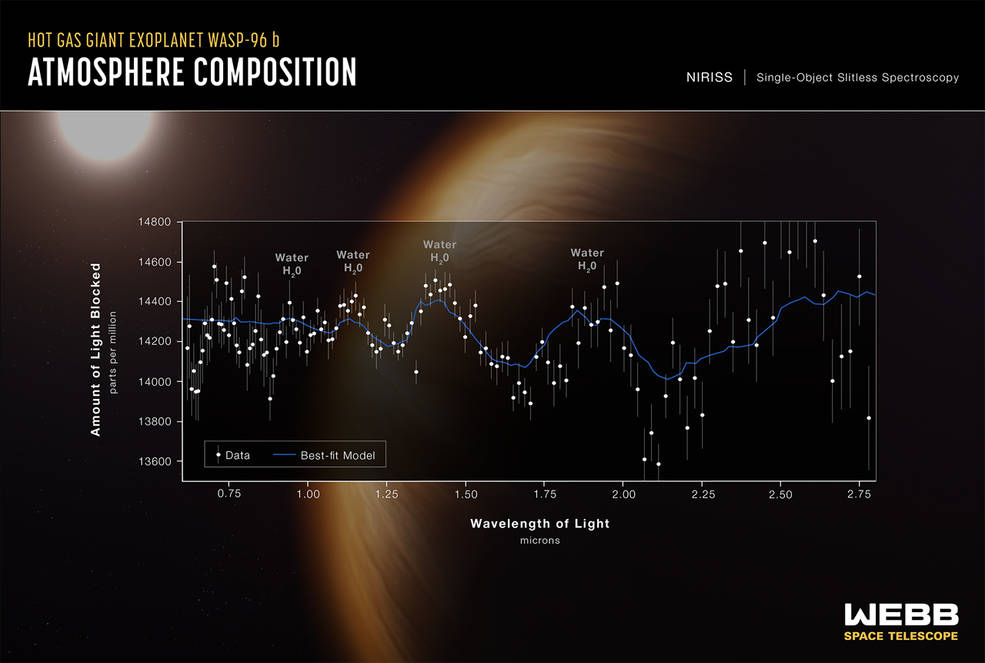
A transmission spectrum of the exoplanet WASP-96b was released by NASA on July 12, 2022.
A transmission spectrum of the exoplanet WASP-96b was released by NASA on July 12, 2022.
A $10 billion project
Webb's 6.5-meter gold-coated primary mirror with an array of 18 hexagonal segments of gold-coated beryllium metal is the what allows it to capture the stunning photos.
Designed to gather and analyze infrared light, Webb is able to observe objects at greater distances with its gigantic light-collecting surface.
The $10 billion project is the world's largest and most powerful space observatory ever built.
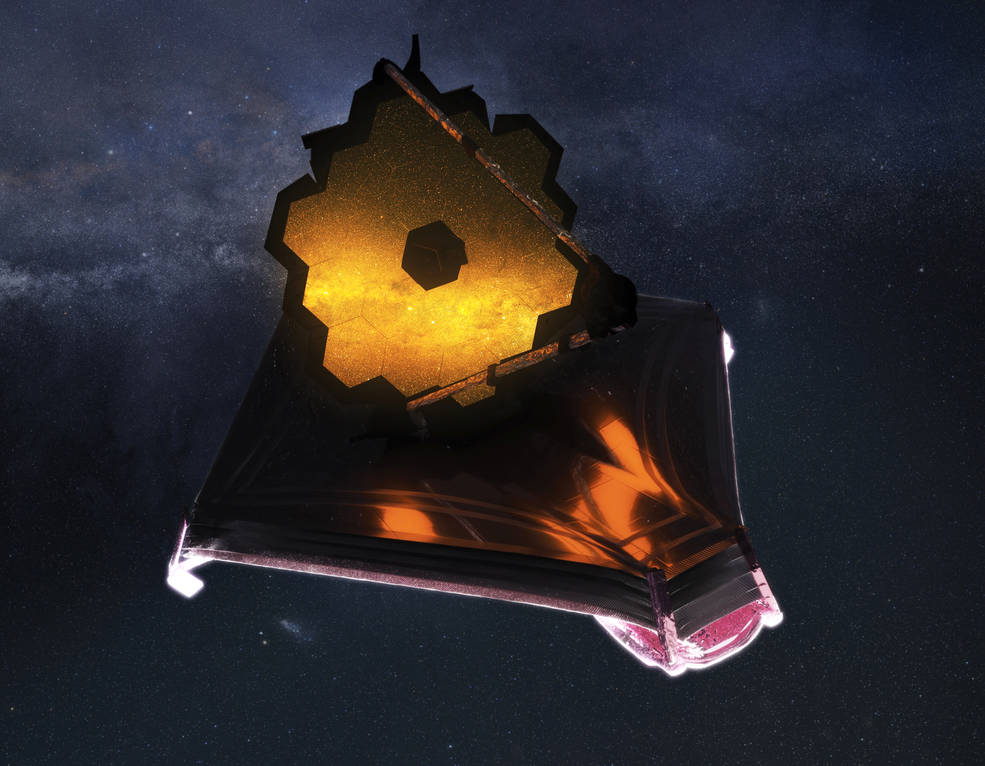
An illustration of NASA's James Webb Space Telescope fully unfolded in space. /NASA
An illustration of NASA's James Webb Space Telescope fully unfolded in space. /NASA
Led by NASA, the Webb telescope is a collaboration with the European and Canadian space agencies. It was constructed under contract by aerospace giant Northrop Grumman Corp and launched into space on Christmas Day 2021 from French Guiana on the northeastern coast of South America.
One month later, it reached the Earth-sun Lagrange point 2, a point that's nearly 1 million miles (1.5 million kilometers) away from Earth, and began unfurling and operating after months of fine-tuning – a process of remotely unfurling Webb's various components, aligning its mirrors and calibrating instruments.
Built to view its subjects chiefly in the infrared spectrum, Webb is about 100 times more sensitive than its 30-year-old predecessor, the Hubble Space Telescope, which operates mainly at optical and ultraviolet wavelengths.
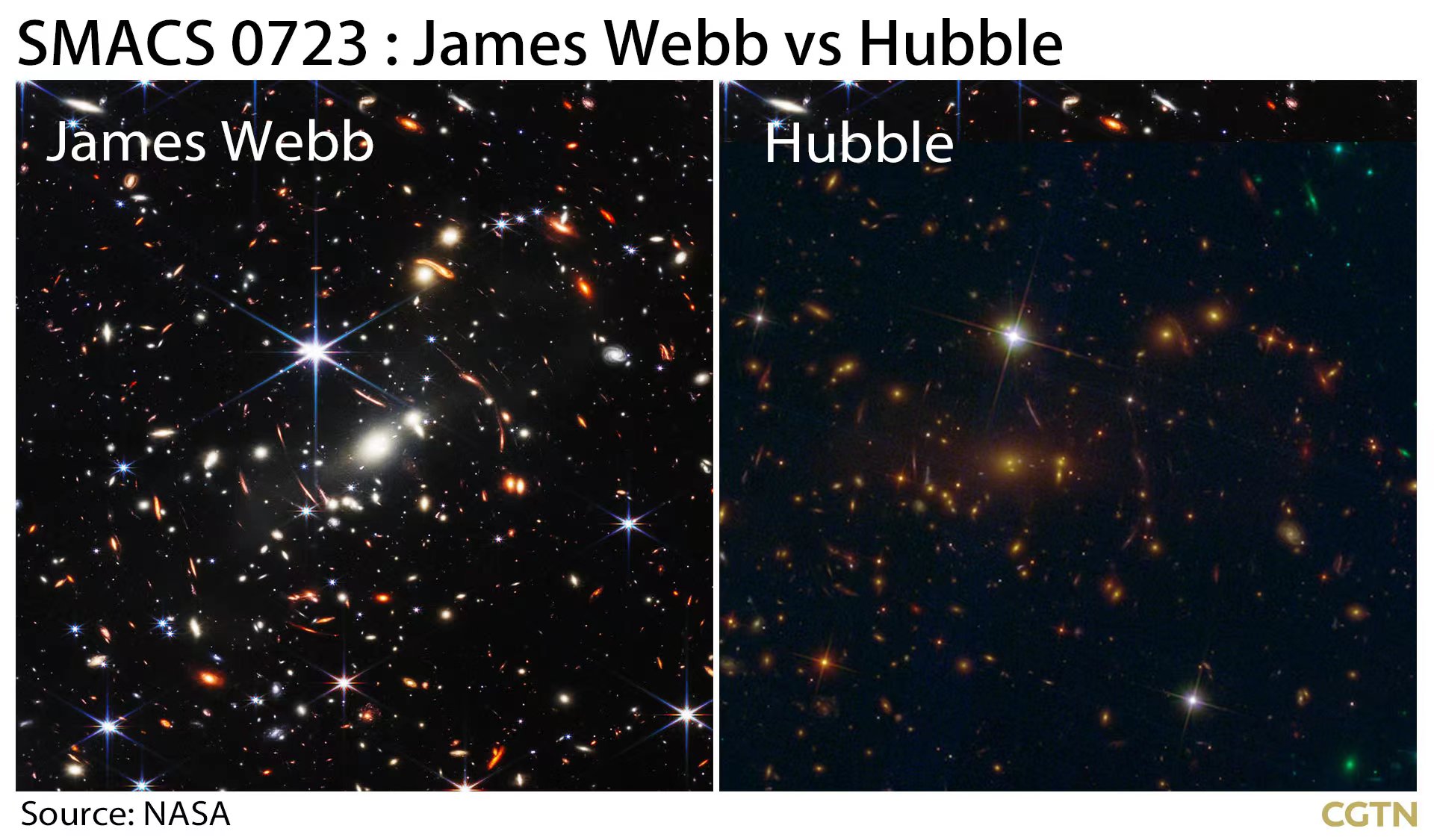
A comparison of the same galaxy cluster taken by the James Webb Space Telescope and the Hubble Space Telescope. /CGTN infographic by Xing Cheng
A comparison of the same galaxy cluster taken by the James Webb Space Telescope and the Hubble Space Telescope. /CGTN infographic by Xing Cheng
With data from the Webb telescope, scientists can now embark on a competitively selected list of missions exploring the evolution of galaxies, the life cycles of stars, the atmospheres of distant exoplanets and the moons of our outer solar system.

